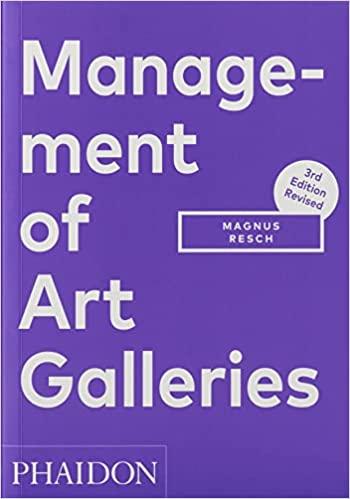The Cocoa Exchange's Sweet Spot in the Supply Chain In May 2017, Mars, Incorporated, the world's largest chocolate company, announced the launch of a new stand-alone subsidiary called The Cocoa Exchange. While Mars focuses on mass producing products like Snickers and M\&M'S that are available in all distribution channels, The Cocoa Exchange aims to sell exclusive and premium chocolate based sales force under three product lines: Pod \& Bean. Dove Signature, and Pure Dark. The Cocoa Exchange's mission is to create incremental, noncannibalizing growth for Mars through niche products targeting individual consumen rather than the mass market. The company accomplishes this by creating supply chain efficiencies, thanks to its parent company, and using the direct selling business model. Direct selling can be a more relational, customized form of selling and allows for even greater market reach and segmentation. Procurement is one of the most important, mutually beneficial aspects of the Mars and The Cocoa Exchange relationship. Chocolate is made from cocoa, which can only be grown in a very few places around the world. The Cocoa Exchange sources most of its cocoa from farmers in developing countries like the Ivory Coast and Ghana in West Africa. Most of these farms are family run with the women of the family doing most of the work. Harvesting cocoa begins by removing ripened pods from the trunk and branches of a cocoa tree. Next, the pods are opened and cocoa beans are removed. Afterward, beans are fermented and dried before they can be processed into chocolate. The Cocoa Exchange has the benefit of using Mars robust supply chain. The Cocoa Exchange is able to source their cocoa beans directly from farmers, just like Mars. However, once production of the chocolate products is complete, The Cocoa Exchange uses independent contractors and the go-to market strategy is selling directly to customers. This is different from Mars, which uses marketing intermediaries like wholesalers and retailers. The Cocoa Exchange's goal is to make specialty chocolate products. such as Pod \& Bean Cappuccino, Caramel S'mores, or the Dove Signature Sea Salt Caramel Collection that appeal to a much more targeted slice of the market. Having less-intense market coverage adds to the exclusivity of the company's premium products and adds more allure to the luxury brand. The concept of marketing and selling directly to the consumer, through an independent contractor salesforce, is ealled direct selling. The Cocoa Exchange embraces the direct selling model and has created a commission-based labor force called "curators" to sell its products through inhouse partics. Party attendees can sample a range of products from The Cocoa Exchange and purchase the products they like online. Curators receive a 25 to 40 percent commission on products sold from their individual online store and gain access to exclusive discounts up to 50 percent depending on performance. Curators also have the opportunity to increase their earning power by building and training a team, receiving 3 to 5 percent commission on tearn sales. The Cocoa Exchange subsidizes the starter kits and curators Additionally, as curatorn' sales grow, they eam credits they ean use to shop. The company also ahips produes dieneth to the consurner, wo caraton aren't burdened with imentory managetnent and protecbon. Premium chocolites and other Cocoa Exchange prodocts are carefully handled sis that they arrive frewh and in "minel" coodition. Direst sell. ing encounges an entrepteneurial ppirit in their chocotis sellers, allows The Cocou Exchangeto find new cestomern. and helps the company maintain a rokut and efficicne supply chain. Businesses are continually putting trore empiais on ervironmental isues, and The Cocon Exchange is bo exception. The compuny believes that sustainabifity has to be at the heart of everything they do, especially as they ate imvested in the agricultural ind sutry, Demand continues to grow for chocolate, especially in developing parts of the world like India. However, sourcing cocou sustainably is limited because the crop can only grow in certain ureas near the equator. Because of these challeagss, The Cocod Exchange aims to improve conditions for farmers so that they can create a larger supply of cocoa. By partnering with the humanitarian group, CARE, whose goal is to end global poverty, The Cocoa Exchange aims to establish Savingt if Loan Associations in Wes African villages to give farmen more access to capital and the ability to improve their besi. ness skills. Additionally, Mars has made a commitment to only using certified sources of cocoa. By imesting in the suppliers from which The Cocoa Exchange sourees and purchases its chocolate, the company has greater influence over the sustainability of its supply chain. The Cocoa Exchange is a unique company designed to sell premium and exclusive chocolate and unique food products directly to consumers. As a subsiliary of Mars, Incorporated. The Cocoa Exchange benefits from an established supply chain where it can align all of the resources necesciry to create luxury chocolate products and food items. Distribution through its direct selling channel allows curators to receive commissions on the products they distribute to customers. The Cocou Exchange also pots a strong emphasis on the sustainability of cocoa sourcing. In addition, by partnering wah CARE and helping runal farmes set up loans and build capital, The Cocoa Exchange belps to increase the supply of cocoa and improve sustainability * Questions for Discussion 1. How is The Cocoa Exchange different than its parent company (Mans. lac.)? 2. What are the benefits of the firect selling moder? How does this impoct the supply chain? 3. How are The Cocoa Exchange 's sustainability efforts impactful








